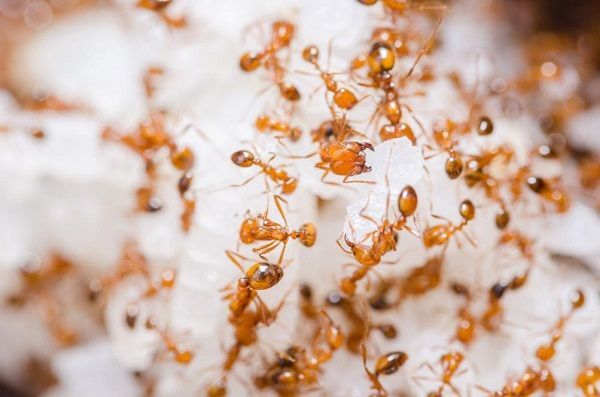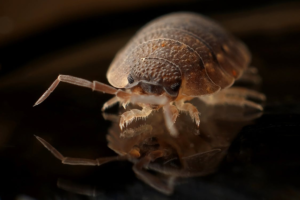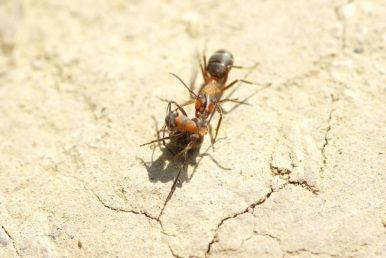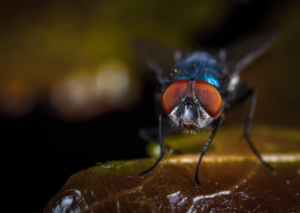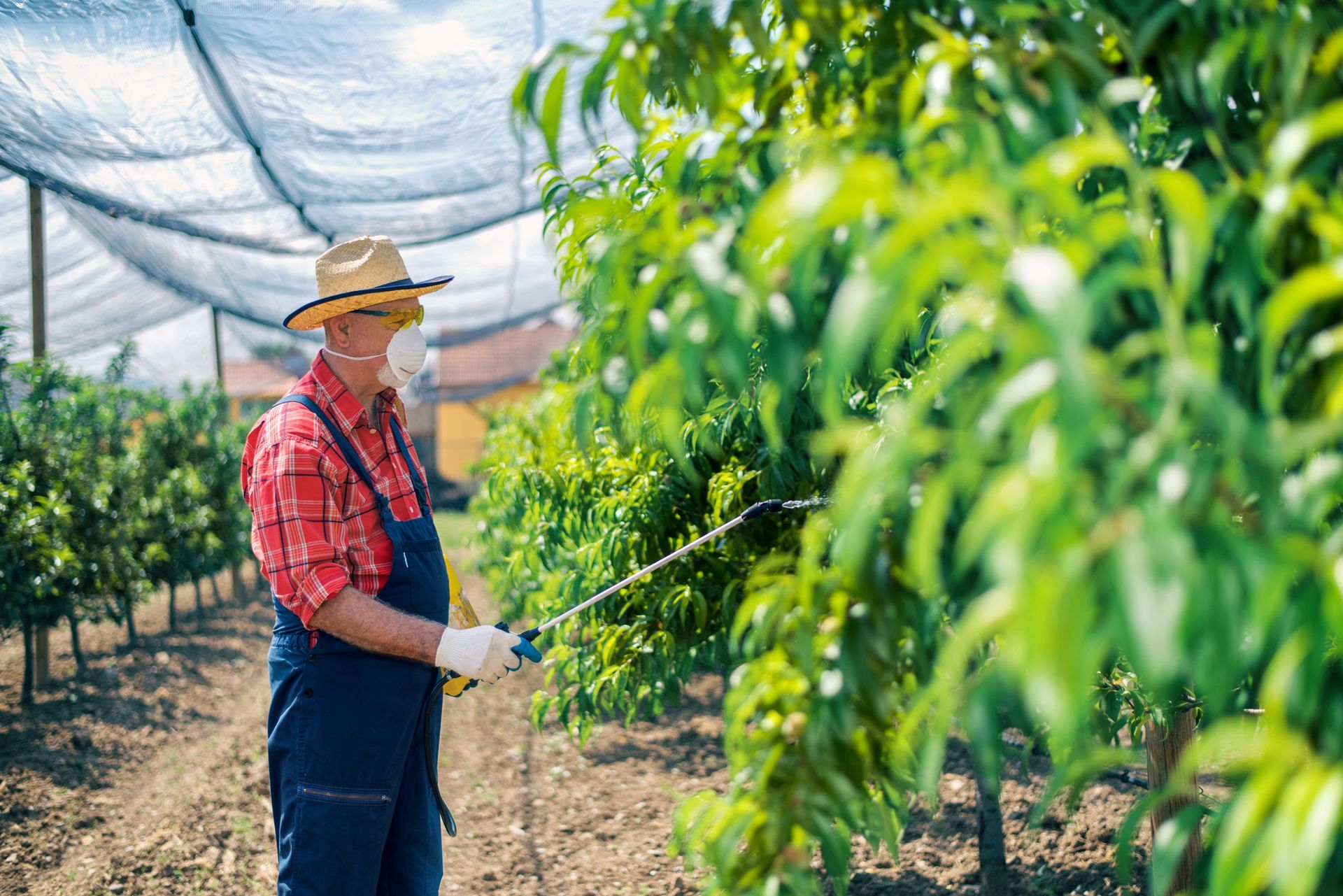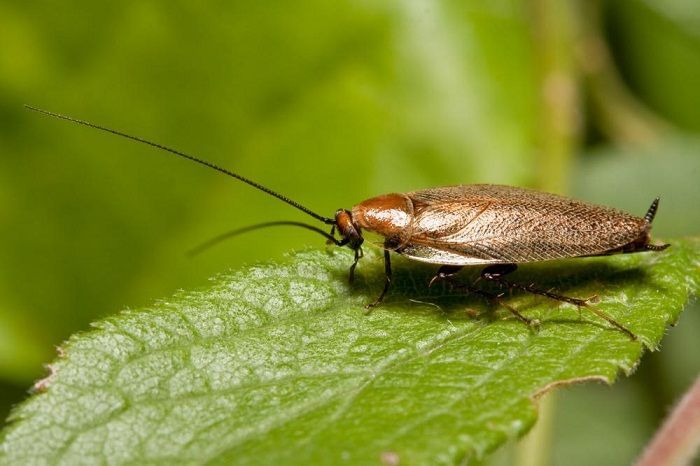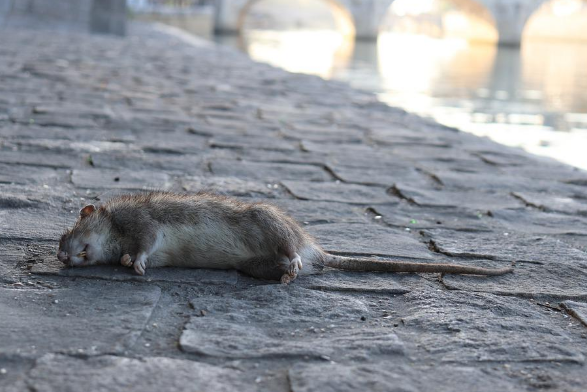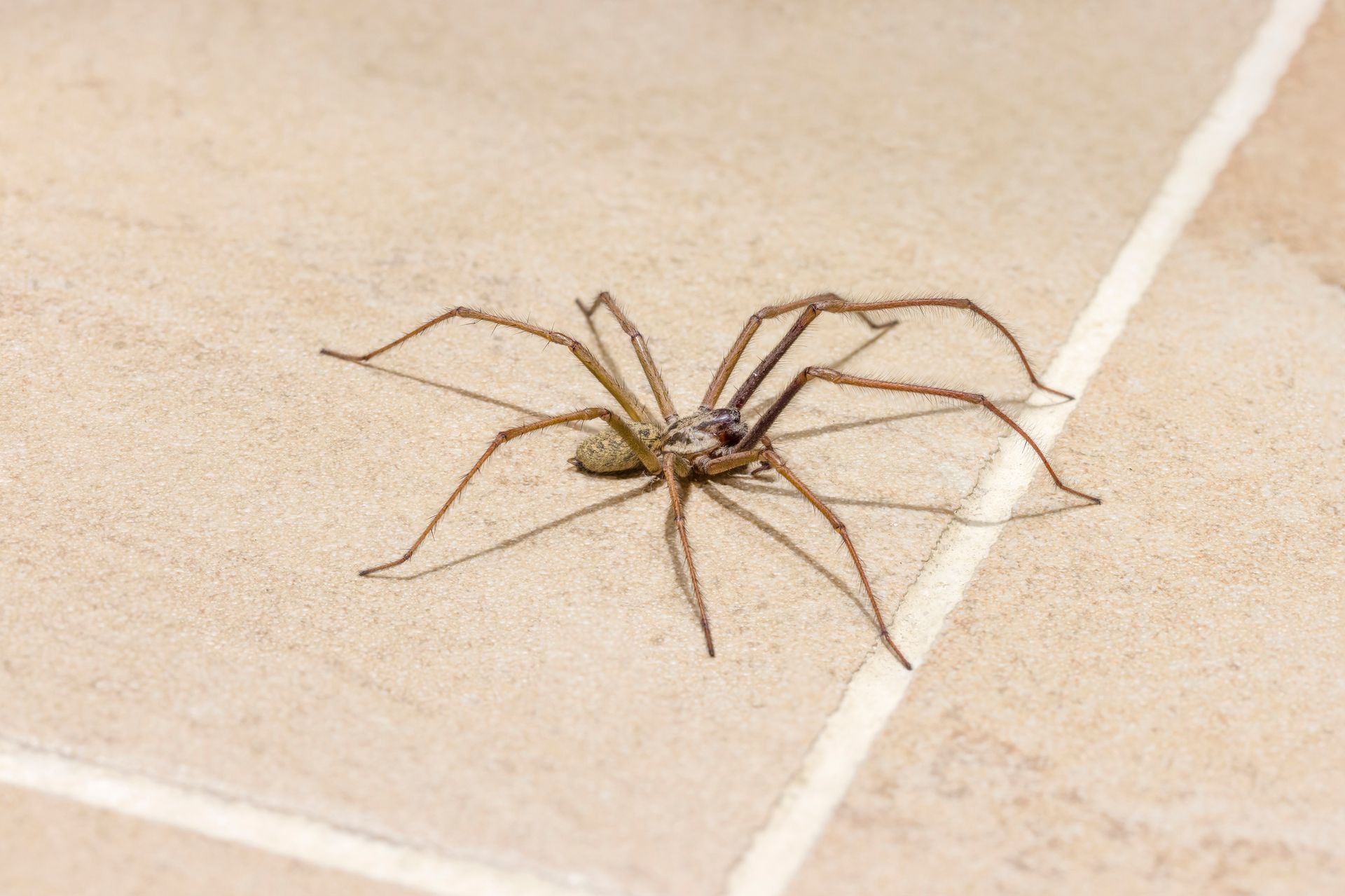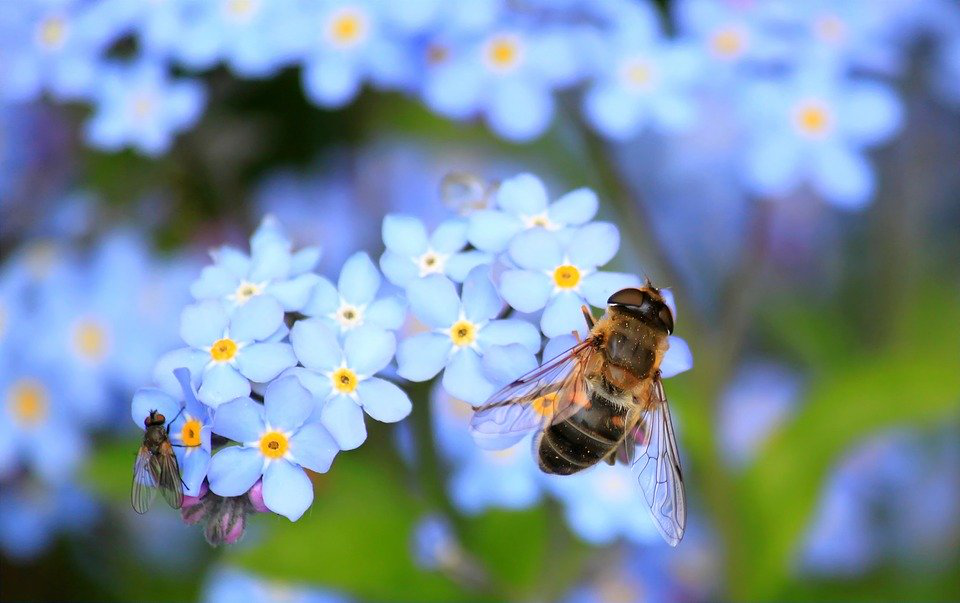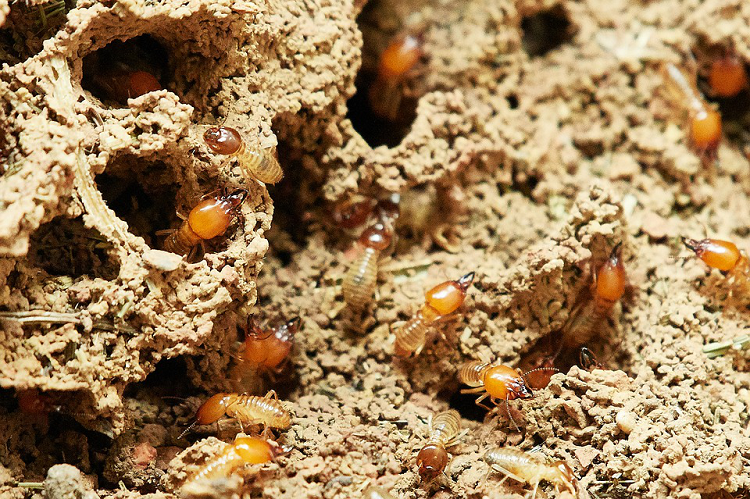Pest Identification Guide
Identifying insects and other pests can be a challenging task. That's precisely why Xterminator Pest Control has created our pest and insect identification guide. These resources serve as convenient bug identifiers, empowering you with knowledge about the pests in Southeast Ohio. Our extensive list covers various bugs, insects, and rodents, making it the most comprehensive online tool for bug and pest identification. Call 740-454-8000 today for a free estimate.
Ants
-
Argentine Ants
(Linepithema humile)
Argentine ant colonies can grow to monumental size. Their colony borders sometimes cover entire habitats. Argentine ant queens also assist with foraging for food. The ant gives off a musty odor when crushed. Worker argentine ants are about one-sixteenth of an inch long. Queen argentine ants are one-eighth of an inch to one-quarter of an inch long.
-
Pavement Ants
(Tetramorium caespitum)
Pavement ants get their name because they make their nests in or under cracks in pavement. They can infest structures.
-
Odorous House Ants
(Tapinoma sessile)
This ant gets its name from the strong, rotten, coconut-like smell it gives off when crushed. These tiny insects range in size from one-sixteenth of an inch to one-eighth of an inch long.
-
Carpenter Ants
(Camponotus species)
Carpenter ants get their name because they excavate wood to build their nests. Their excavation results in smooth tunnels inside the wood. Carpenter ants range in size from one-quarter inch for a worker ant to up to three-quarters inch for a queen.
-
Red Imported Fire Ants
Red imported fire ants nest in the soil and build mound nests. They can infest garages.
Biting Insects
-
Bed Bugs
(Cimex lectularius)
The adult bed bug is oval and flat. They grow to only about a quarter of an inch long. Bed bugs lack wings, so you won't see them flying around your bedroom. Under cover of darkness, they crawl in search of blood, preferably from a human. Bed bugs use a piercing, sucking proboscis to penetrate the skin of their host. Adults are brown but appear reddish-brown when engorged with blood. For more information, contact us today.
-
Flea
(Siphonaptera)
Fleas are parasites that feed on the blood of any warm-blooded body. The most common species is the cat flea, which often feasts on cats, dogs, and humans.
-
Human Lice
(Pediculus humanus)
One of the best-known lice is Pediculus humanus – the human louse – which has two distinct races. The race capitis may be found in the hair on the head, and their eggs, stuck to hairs, are termed nits. These can be very difficult and time-consuming to remove – this is where the term 'nit-picking' came from. The race corporis is found on the body. Body lice can carry diseases such as relapsing fever (caused by Borellia recurrentis) and typhus (Rickettsia prowazeki) although only if they feed on someone who already has the disease. Sucking lice on domestic animals can also spread disease. Of these two human lice, the head louse is more common, and sometimes, there are outbreaks of head lice infestation in schools. Head lice can survive any amount of washing and combing, so they are not associated with a lack of hygiene. Luckily, head lice can be irritating, but they do not carry disease.
-
Sucking Lice
(Siphunculata)
Sucking lice have piercing mouthparts, which they use to suck the blood of their hosts – mostly mammals, including men. They hang on to hair with a single giant claw at the end of their strong legs. Lice that feed exclusively on blood do not get a well-balanced diet and make up for this by having bacteria in their gut that provide additional nutrients. Nearly every mammal species can be infested by a sucking louse – even seals, whales, and walruses have them! These 'marine lice' all belong to the family Echinophthiriidae, and they can exist underwater for long periods by taking a layer of air between their specially modified body hairs or breathing air trapped in the host's body hair.
Fabric Pests
-
Varied Carpet Beetles
(Anthrenus verbasci)
Varied carpet beetles get their name from the rainbow of color on their back
surfaces.
Flies
-
Fruit Flies
(Drosophila species)
Fruit flies feed on decaying fruits and vegetables.
-
House Flies
(Musca domestica)
House flies get their name from being the most common fly found around homes. Adult house flies can grow to one-quarter of an inch long and usually live between 15 and 25 days.
Occasional Invaders
-
Boxelder Bug
(Boisea trivittata)
Boxelder Bugs commonly congregate alongside homes or trees near a female Boxelder and in full view of the sun. They are identifiable by the distinct black and red coloring on their bodies (the red appearing as stripes against the black). TIP: Boxelder bugs will secrete a staining dye when crushed. If found indoors, your best bet is to remove them with a paper towel or vacuum cleaner to avoid a mess.
-
Centipedes
(Chilopoda and Diplopoda)
Centipedes are arthropods belonging to the class Chilopoda of the subphylum Myriapoda. They are elongated metameric animals with one pair of legs per body segment. Despite the name, centipedes can have a varying number of legs, ranging from under 20 to over 300. Centipedes can easily be distinguished from millipedes by counting the number of pairs of legs arising from most body segments: millipedes have two pairs. In contrast, centipedes bear one pair per segment, with the first pair of legs being modified into fangs.
-
Earwigs
(Order Dermaptera)
Earwigs got their name from the myth that they crawl into sleeping people's ears and tunnel into their brains. The long cerci, or clippers, on their backsides easily identify an earwig.
-
Lady Bug
(Coccinellids)
A few species are considered pests in North America and Europe, but they are generally considered useful insects as many species feed on aphids or scale insects, which are pests in gardens, agricultural fields, orchards, and similar places. Harmonia axyridis (or the Harlequin ladybug) was introduced into North America from Asia in 1988 to control aphids but is now the most common species as it is out-competing many of the native species.
-
Millipedes
(Oxidus gracilis )
Millipedes are arthropods that have two pairs of legs per segment (except for the first segment behind the head, which does not have any appendages at all, and the next few, which only have one pair of legs). Each segment that has two pairs of legs is a result of two single segments fused together as one. Most millipedes have very elongated cylindrical bodies, although some are flattened dorso-ventrally, while pill millipedes are shorter and can roll into a ball, like a pillbug. The millipede's most obvious feature is its large number of legs. Having very many short legs makes millipedes rather slow, but they are powerful burrowers.
-
Pill Bugs
(Armadillilium vulgare)
This pest is the only crustacean that has completely adapted to spending life on land. Pillbugs have oval bodies and seven pairs of legs. They are easily recognized by their back, which is made up of seven rigid individual plates. Pillbugs are sometimes referred to as rollie-pollies.
-
Stink Bugs
(Halyomorpha halys)
This insect, notorious for its "smelly" reputation, earned its name from its tendency to release an odor when disturbed or when crushed. Many other insects have these same characteristics, including some species of ants, beetles, and other bugs. Most stink bugs are herbivorous and use their piercing and sucking mouthparts to feed on plant juices. A few common species of stink bugs are predatory and use their mouthparts to drain fluids from caterpillars and other pest insects.
-
Weevil
(Lixus angustatus)
A weevil is any beetle from the Curculionoidea superfamily. They are usually small, less than 6 millimeters (0.24 in), and herbivorous. There are over 60,000 species in several families, mostly in the family Curculionidae (the true weevils). Some other beetles, although not closely related, bear the name "weevil," such as the biscuit weevil (Stegobium paniceum), which belongs to the family Anobiidae. Many weevils are damaging to crops. The grain or wheat weevil (Sitophilus granarius) damages stored grain. The boll weevil (Anthonomus grandis) attacks cotton crops. It lays its eggs inside cotton bolls, and the young weevils eat their way out.
Pantry Pests
-
Indian Meal Moths
(Plodia interpuctella)
The Indian meal moth was given its name after an insect scientist found it feeding on corn meal, also known as Indian meal. From wing tip to wing tip, adult moths measure from five-eighths of an inch to three-fourths of an inch long.
-
Merchant Grain Beetles
(Anobiid and Lyctus species)
Merchant grain beetles are typically not found in grain products but instead like to attack cereals, cake mixes, macaroni, cookies, and chocolate. Merchant grain beetles are dark brown and have six saw-like teeth on each side of their bodies. They can grow to be one-eighth of an inch long and have very flat bodies.
Roaches
-
American Cockroaches
(Periplaneta americana (L.))
The American cockroach is the largest of the house-infesting cockroaches.
-
Brown-Banded Cockroaches
(Supella longipalpa)
Brown-banded cockroaches get their name from the two lighter bands they have across their dark brownish bodies. In addition to the distinctive banding, males have full wings, which reach beyond the tip of their rather pointed abdomens. Still, females have underdeveloped wings, much shorter than their broad, rounded abdomens. The lighter band markings are much more distinct in nymphs than in adults of either sex.
-
German Roach
The German cockroach is found throughout the world in association with humans. German cockroaches adulterate food or food products with their feces and defensive secretions, physically transport and often harbor pathogenic organisms, may cause severe allergic responses, and in extremely heavy infestations, have been reported to bite humans and feed on food residues on the faces of sleeping humans. In addition, some scientists suggest that German cockroach infestations may cause human psychological stress and that the stigma associated with infestations alters human behavior.
-
Oriental Cockroaches
Oriental Cockroaches, Blatta orientalis (L.), are large, very dark (almost black, but sometimes dark reddish-brown), shiny cockroaches that live in sewers and similar wet, decaying organic matter. They are sometimes called “water bugs” because they come out of drains, and “black beetle cockroaches” because of their smooth, dark bodies. Males are about 1 inch long, with wings that cover only about 3/4 of their abdomen; females are about 1 1/4 inch long and have only short stubs of wing pads.
Rodents
-
Deer Mice
(Peromyscus maniculatus)
The deer mouse rarely invades homes and is found in rural areas.
-
House Mice
(Mus domesticus)
The house mouse is the most common rodent pest in most parts of the world. It can breed rapidly and adapt quickly to changing conditions.
-
Norway Rats
(Rattus norvegicus)
These rats have smaller eyes and ears and shorter tails.
-
Roof Rats
(Rattus rattus)
Roof rats get their name from their tendency to be found in the upper parts of buildings. Ranging in size from 6 to 8 inches in length, not including their tails, they have very poor vision and are color blind. They do have extremely strong senses of hearing, smell, touch, and taste.
Spiders
-
American House Spider
(Parasteatoda tepidariorum)
The American house spider is an extremely common spider that is fairly likely to escape notice since it tends to build its tangled web in secluded locations. Its behavior on its web is quiet and efficient, so it generally does not draw attention to itself. There are several species of this genus, Achaearania. Their coloration consists generally of patterns of shades of brown, and they are rather dull in appearance, all of which make it easier for them to slip into the background. They are not known to bite people with any high degree of frequency, and their venom is not known to be dangerous to human beings.
-
Black Widow Spiders
(Lactrodectus mactans)
Black widow spiders are most recognized for the red hourglass shape under their abdomen. Contrary to legend, female black widow spiders rarely devour the male black widow spider after mating.
-
Brown Recluse Spiders
(Loxosceles reclusa)
Brown recluse spiders have a characteristic dark brown violin marking on their back.
-
Wolf Spider
(Rhabidosa rabida)
Wolf spiders are members of the family Lycosidae. They are robust and agile hunters with good eyesight. They live mostly solitary lives and hunt alone. Some are opportunistic hunters, pouncing upon prey as they find it or even chasing it over short distances. Some will even wait for passing prey in or near the mouth of a burrow. There are many genera of wolf spider, ranging in body size from less than 1 to 30 millimeters (0.04 to 1.18 in). They have eight eyes arranged in three rows. The bottom row consists of four small eyes, the middle row has two very large eyes (which distinguishes them from the Pisauridae), and the top row has two medium-sized eyes.
Stinging Pests
-
Africanized Killer Bees
(Apis mellifera scutellata)
Africanized “killer” bees look so much like a regular honeybee that the only way to tell the two apart is by measuring their bodies. Africanized bees have different wing measurements than honeybees.
-
Bumble Bees
(Subfamily bombinae; bombus species)
Bumble bees are beneficial insects because they pollinate crops and plants.
-
Honeybees
(Apis nekkufera Linnaeus)
Honey bees are social insects found all over the world. They are an extremely important beneficial insect because of their role in pollination. Honey bees pollinate more than 100 crops in the U.S.
-
Mosquitoes
(Culex species and others)
One of the best-known summer pests, mosquitoes breed in stagnant water or soft soil and can develop from egg to adult in 10 to 14 days.
-
Yellowjackets
(Vespula spp.)
There are several species of yellow jackets. These flying insects typically have a yellow and black head/face and a patterned abdomen. Many say the pattern resembles stripes. Signature to species, the abdomen pattern can help an entomologist or pest professional identify specific types of yellowjackets.
Termites
-
Carpenter Bees
(Xylocopa species)
Carpenter bees look like typical bumblebees but often lack yellow stripes. They are solitary bees.
-
Dampwood Termites
(Family Hodotermitidae)
As the name suggests, damp wood termites infest wood with high moisture content. Dampwood termites are normally larger than other termite species. Bodies of king and queen dampwood termites range from 1/2 inch to 5/8 inch long and have two pairs of wings that are equal in size and shape and extend beyond their abdomen. Nymphs range up to 5/8 inch, and worker-damp wood termites are up to 3/4 inch.
-
Drywood Termites
(Family Kalotermitidae)
These social insects infest dry wood and do not require contact with the soil.
-
Formosan Termites
(C. formosanus)
Originally from China, Formosan termites are the most voracious, aggressive, and devious of over 2,000 termite species known to science. Formosan termites are a subterranean species of termite. Swarmer Formosan termites, including their wings, are about 1/2 inch in length.
-
Powderpost Beetles
(Lyctus brunneus)
Powderpost beetles lay their eggs in wood cracks, and the larvae tunnel into the surface, filling it with a very fine powder-like dust. Powderpost beetles have long, narrow, flat bodies that can easily attack wood surfaces. These beetles are reddish-brown.
-
Subterranean Termites
(Family Rhinotermitidae)
Subterranean termites live in underground colonies or in moist, secluded areas aboveground that can contain up to 2 million members. They build distinctive “mud tubes” to gain access to food sources and to protect themselves from open air. Termite colonies are organized into castes depending on tasks — workers, soldiers, and reproductives. The characteristics of a subterranean termite are dependent on the termite’s role in the colony. Cream-colored Worker subterranean termites are 1/8 to 3/8’s of an inch in length. Soldier subterranean termites are of a similar body length but are distinguished by their powerful mandibles. Solider termites have cream-colored bodies and brown heads. Reproductive subterranean termites are approximately one inch long.
Ticks and Mites
-
Blacklegged (Deer) Ticks
(Ixodes scapularis)
The black-legged tick is named for its dark legs, which are a contrast to its pale body. Blacklegged ticks are sometimes called deer ticks.
-
House Dust Mites
(Dermatophagoides farinae)
House dust mites have received much attention in the early 1990s and again recently. The house dust mite is nearly impossible to see without magnification and is named for the fact that they feed on dead skin shed by humans as well as other protein materials.
Ready to get started? Call 740-454-8000.

